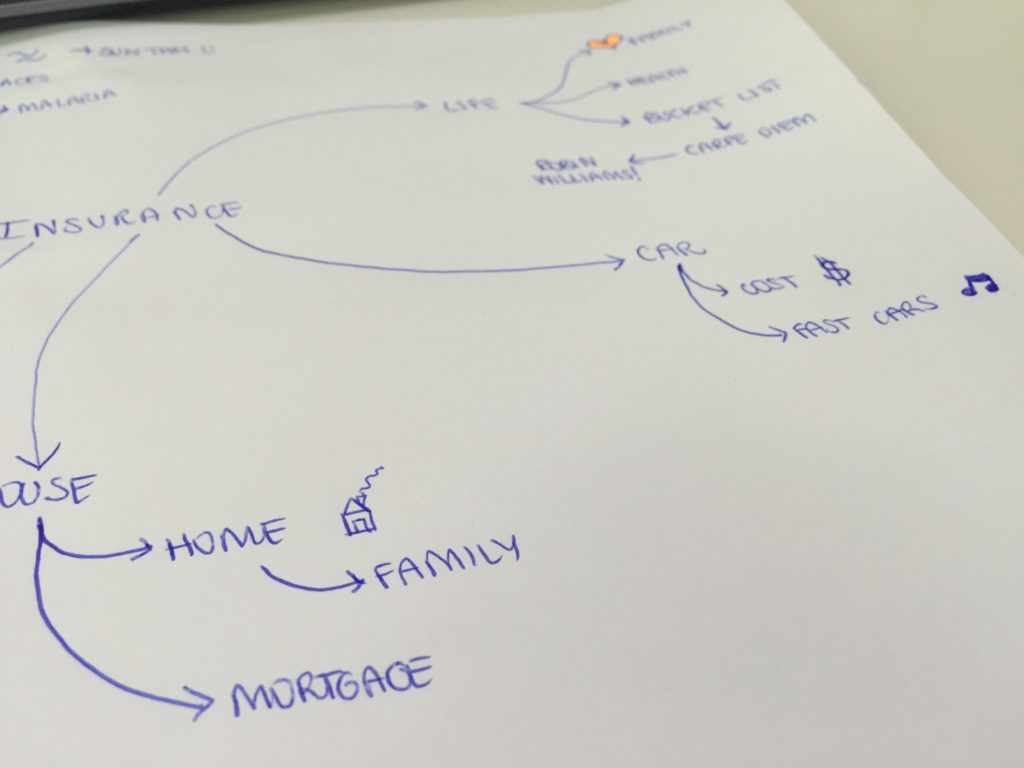Anyone can come up with a great idea, but it’s a little tougher to be creative whilst generating the results your business needs. Follow these six steps to bring brilliant ideas that work to life.
Do you ever feel like your ideas aren’t creative enough or, when they are, they don’t generate the results you hoped for? You’re not alone. I’ve seen many extremely creative ideas flop whilst average campaigns generate OK results.
The key to success is time. Don’t rush it. Take time to follow all the necessary steps to the process and to do the relevant research. Knowledge is power.
Follow these steps and, with time and practice, you’ll generate great ideas that turn into successful campaigns.
Step 1: Create a brief
Whether you’re outsourcing your idea-generation or keeping it in-house, you’ll need a brief. Why? Because you need to make sure that everyone has the necessary information to come up with great ideas that work for your brand and audience.
You’ll need to be as comprehensive and as clear as possible when writing your brief. Include:
- Your business objectives
- Your campaign objectives
- The target audience analysis
- Your typical user journey and conversion path
- Your USPs
- Your brand’s personality
- A competitor activity analysis
- An analysis of influencers in your industry
- Keyword research and seasonality
- Your previous marketing activity analysis
- The resources you have available (in-house designer, client database, freelance content writers, software, …)
- Industry events
- Relevant awareness days you can jump on
Try to keep the brief concise and to-the-point – a lot of people will have to take time out of their busy day to read it.
Share the brief with your team a week (or at least a few days) in advance, so they can familiarise themselves with it. We all know the best ideas come in the shower, or on the bus. Give your people time to unleash their creativity.
Step 2: Brainstorm!
Now it’s time to put your brain to work.
Don’t limit yourself – start big. You can always resize an idea that is too big, but it’s much tougher to be creative with, and expand on, a small idea. Keep in mind there are no stupid ideas, so allow your mind to wander far and wide.
Try mind mapping. This is a technique that allows you to put your thoughts on paper, exactly as they appear in your head. This will be very helpful when trying to pull everything together.
Step 3: Get together
This stage deserves a step of its own.
Many people are more comfortable brainstorming on their own because it takes away the pressure of being in a group and the fear of not being able to come up with an idea on the spot. That’s totally fine. However, collaboration is essential when it comes to great ideas.
Get your team together and ask everyone to share at least three ideas – they can decide whether to show up with a list or to think of them on the spot. Let people pitch in and add or amend the ideas of others – stimulate debate. Ask ‘how can we make this idea better?’, ‘what sort of channels can we use to promote it?’ or ‘how is it going to relate to our offering?’. People will start collaborating over ideas and make them bigger and better.
Step 4: Pick an idea(s)
Once you’ve got a list of good ideas, it’s decision time. You may want to use more than one and come up with a number of campaigns to promote each, or you might want to have an overarching theme for the whole year. Whichever way you go, it’s going to be a tough decision.
It’s time to put your audience analysis to use once again. Ask your personas whether they’d engage with a certain idea. Ask yourself if the idea is shareable, newsworthy and whether it’d fit the brand personality. Who is going to amplify it? When is it best to launch it?
These questions will help you identify the best ideas(s) for your campaign.
Step 5: Choose the format(s)
Once you’ve settled on an idea (or more), it’s time to decide the sort of formats it can work with. This is key to making sure that you generate the results you hope to achieve and that you’re able to measure them.
There are many formats to choose from, including:
- PR story
- Survey
- Interactive piece
- Visual piece
- Lead generation piece
- Social media competition
- Video
- Event
- Mobile app
- Tool / widget
- User generated content
- Press release
You’ll need to make sure that, whatever format you go for, there is a direct correlation between the results it can generate and your campaign and business objectives.
For example, if you need to demonstrate that you’ve generated leads off the back of a campaign, you’ll want to pick a format that allows you to collect email addresses. On the other hand, if your KPIs are based around social media metrics, you’ll need to think of a highly shareable idea and choose a format that integrates well on social media.
Don’t forget an idea can be promoted in various formats. That’s what integrated campaigns are all about.
Step 6: Bring your idea(s) to life
Now you know exactly what shape your campaign is going to take, it’s time to plan it all. Create a campaign calendar where you list all the stages of preparation of the idea – from copywriting to design-briefing and development. The key to successful planning is to break down each activity into small steps. This way, you won’t miss out on anything.
Go ahead and try the process. Follow each step and don’t skip any of them. If you get stuck or need any further advice, please do get in touch with me – I’m on Twitter @elenamanighetti.








